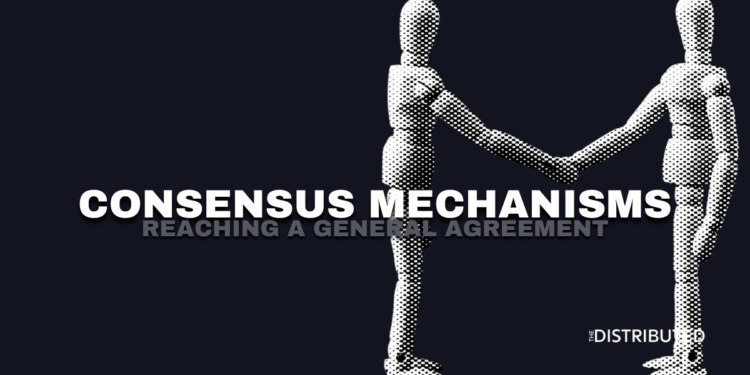What Is A Consensus Mechanism?
Consensus is when a general agreement is reached. In reference to blockchains, consensus mechanisms are fault-tolerant systems utilized to reach an agreement on a single state of data within the network among distributed nodes. [1]Shubhani Aggarwal and Neeraj Kumar – Advances In Computers (Vol 121), Chapter 11 – Cryptographic Consensus Mechanisms
Such technologies like cryptocurrencies use this mechanism to assist in record-keeping on a distributed ledger because it allows nodes to work together and stay secure. The consensus mechanism acts as the rule book, deciding how legitimate certain contributions are on the blockchain-based on the mechanism being used.
The consensus is reached when at least 51% of the nodes on the network agree on the next global state of the network.
Types Of Consensus Mechanisms
Consensus mechanisms come in many different forms. Each mechanism will allow for a decentralized system to achieve agreement with adequate trust and security.
Proof-of-Work (PoW)
In Proof-of-Work consensus, transactions are validated through a process called cryptocurrency mining. Cryptocurrency mining will reward miners for validating a block in the native token of the blockchain, adding to the circulation of tokens.
Proof-of-Stake (PoS)
In Proof-of-Stake consensus, tokens are allocated the responsibility of maintaining the public ledger. Therefore, owners of tokens will sometimes become validators and will be rewarded for simply holding their coins. Like PoW, the rewards are the native token of the blockchain and are how new tokens are entered into circulation.
Proof-of-Capacity (PoC)
Proof-of-Capacity shares the memory space of the nodes on the network. The more memory a node offers, the more rights it has to maintain the public ledger’s data.
Proof-of-Activity (PoA)
Proof-of-Activity is a hybrid consensus of PoW and PoS. Mining begins with PoW, once the block is found it switches to the PoS consensus and a random participant is selected to validate the block.
Proof-of-Authority (PoA)
In Proof-of-Stake consensus nodes stake monetary value whereas Proof-of-Authority consensus stakes the actual identities of the nodes in the system. Through identifying validators, PoA consensus becomes fundamentally centralized and is best suited for private blockchains such as a group of banks.
Proof-of-Burn (PoB)
In Proof-of-Burn, transactors send small amounts of cryptocurrency to inaccessible wallet addresses, to “burn” them from the circulating supply. This slowly decreases the supply, making each token still in circulation more valuable as time goes on.
References



